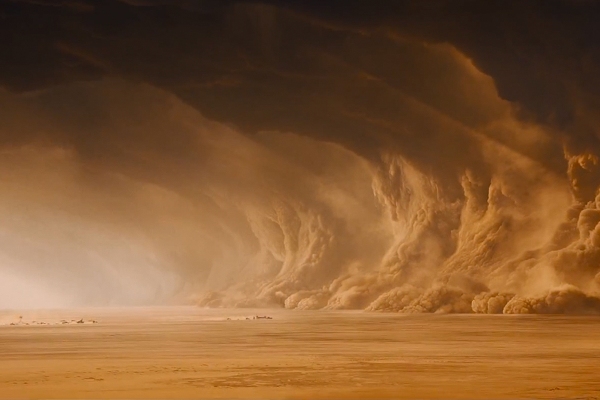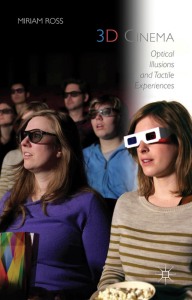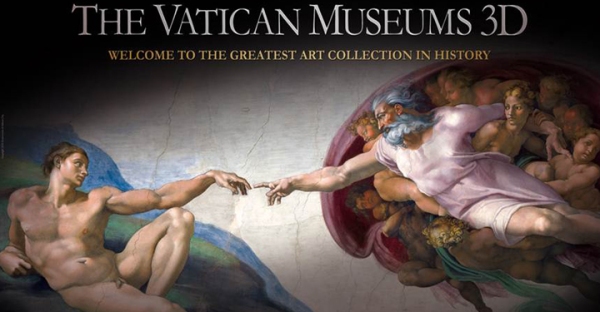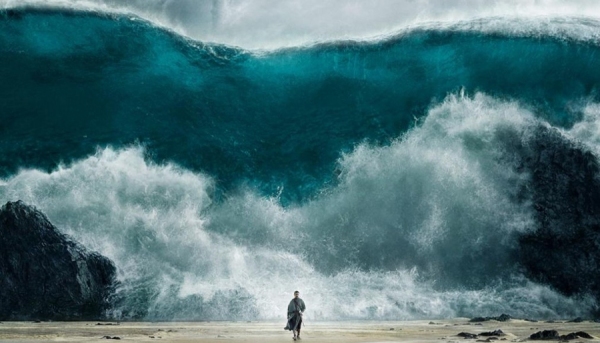
It has been quite a while since I have written a post on 3D. Alita: Battle Angel (2019) marks a type of anniversary for me. It’s almost 10 years since Avatar’s (2009) release, when I first became serious about studying 3D cinema. What’s fascinating about Alita is that, for all its advanced visual effects, it closely follows a stereoscopic 3D formula established by Hollywood almost a decade ago. This is not entirely surprising considering director Robert Rodriguez and producers James Cameron and Jon Landau have a long history working in digital 3D.
Alita is also a film that shows Hollywood’s attempts to move forward in the area of representation whilst keeping a foot firmly in the safe narrative strategies that maintain box office appeal. While Alita has one of the few female action hero leads of the last decade, and while the casting has been hailed as diverse, this is still Hollywood holding on to storytelling of the past: a heterosexual love story forms the core of the emotional entanglement; beyond Alita women of colour are given bit parts in the form of a nurse and women-to-be-assaulted-at-night; one token women is added to the gang of bounty hunter bad asses (no speaking role); the first significant man of colour to be seen, Vector, is (of course) the baddie.

It’s within this framework that the stereoscopic effects push at the boundaries of visual imagery but are closely tethered to the narrative so that safe storytelling can take place. As the film opens on mid-shots of Dr Ido amongst the debris of a massive junkyard underneath the sky city Zalem, there is carefully placed fore, mid and background depth. This is emphasised in the shot when he discovers the head and torso of a cyborg: the small screen with translucent data that he holds up to scan the cyborg provides the midpoint in a three stage depth set-up. The next scene, inside Ido’s laboratory mixes a steam punk aesthetic of antiquated machinery and equipment with numerous translucent screens that emphasise the spatial possibilities of data. 3D is used here to emphasise the configurations of a dystopian future world that we are gently invited in to.
When the cyborg, Alita, wakes up in the next scene she is surrounded by comforting blankets in a snugly bed. Striking close-ups on Alita’s face, drawing attention to her large eyes, and then her robotic arm as it stretches horizontally across the screen give us the sense of the uncanny valley. However, the stereoscopic depth has placed us in close intimate contact with her. The 3D allows us an emotional connection as we come to terms with Alita’s difference. Not just difference in that Alita is a cyborg but difference in that we have a female protagonist in this richly created science fiction world.

Downstairs, in Ido’s kitchen the over the shoulder two-shots between Ido and Alita are arranged to display further emotional connections – joy in Alita’s face as she tastes an orange for the first time; tears in her eyes as she realises she doesn’t know who she is; Ido’s empathy with both these moments. The stereoscopic depth enhances the placement of these two characters but there is also a strong sense of ontological difference. This is not simply at the narrative level: between a cyborg and a human. Rather it is at the level of the image. While Alita’s face and body are rendered in fine detail, she is still visibly of digital construction and not of the same visual constitution as the photographed actor playing Ido. This is emphasised by the subtle depth relations that make the difference in detail between the two apparent. Further to this, while stereoscopic depth emphasises where they are placed in relation to one another, the use of shallow focus suggests the characters have their own, particular, space in this relationship.
The first third of the film is typical of these moments and thus typical of digital Hollywood 3D. There are extensive depth relations in positive parallax space but objects in the foreground – mostly static – only protrude very gently into negative parallax space. There are almost no objects traversing the z-axis from foreground to background or vice versa. Stereoscopic depth is used for the creation and emphasis on relationships and spatial placement but is not meant to draw attention to itself or be seen as assaulting the audience. One of the few exceptions is when Alita and love interest, Hugo, are on top of a building in Iron City. There is one vertiginous shot where they/we look down the side of the building to the street far below at the same time as an aerial points towards the audience. It is the slightest teaser of the more dynamic depth relations that will come later in the film; a temperate reminder that there is a reason we have paid the 3D surcharge.

A little later the first battle between Alita and other cyborgs takes place as she and Ido are confronted in an alleyway. There is a similar ontological difference between the CGI cyborgs and the human Ido. It is the moment when the film confronts us with the alien difference of Alita – with her in built violent responses – while also asking us to invest in her powerful momentum. Just before Alita attacks the cyborg Grewishka, she performs a high kick that seems aimed right at the audience as she traverses negative parallax space. This is followed by Alita’s movement forward that leads to an intense close-up on one of her eyes: a cinematographic feat only stereoscopically possible with advanced digital compositing. It is the stereoscopic equivalent of the narrative turning point: a ramping up of depth intensity which sets a new norm for depth intensity and use of negative parallax space for the rest of the film. It is no coincidence that it comes at exactly the same moment as the narrative’s first turning point.
As the film progresses Alita’s strength increases and stereoscopic effects become more intense. In the bar fight, stereoscopic debris occurs as glass shatters towards the audience and splintering wood shoots into negative parallax space. Notably, the former takes place in slow motion, announcing the moment at which the film has sufficiently gained the trust of the audience to overtly show off its spectacular manifestations. After the initial bar fight, Ido enters and manages to get the fighters to calm down and remain still. Like the choreography of a complicated dance momentarily paused, the stereoscopic depth allows the spatial relationships of the characters to be seen. It is only a short pauses and Grewishka soon enters the scene. The audience is now primed for full use of the z-axis and this is granted when Grewishka crashes through the floor into the ‘underworld,’ allowing a fight along the z-axis to ensue between him and Alita. His mechanical tendrils frequently shoot directly towards the audience as well as away from them, often in slow motion so the full effect of his assaultive power is clear.

In line with the flow in and out of intensity in the narrative’s dramatic action, the use of stereoscopic depth fields also strengthens and relaxes. There is the ubiquitous use of an underwater scene when Alita jumps down into a lake where a URM spacecrafts from Mars crashed. In this moment, objects surround us in a tranquil manner while Alita appears calm. Soon after, action and stereoscopic effects gear up again.
When the second, climatic, Motor Ball battle occurs, it is much more kinaesthetically charged. Alita has mastered the use of a new cyborg body and we are invited along for the ride. Shots are set up in a phantom ride aesthetic where we feel that we are propelled into the fast moving scene. When the characters break out of the Motor Ball arena and along a series of pipes above the city, the perforated pipes gush water straight at the audience so that we experience the same momentum and counter force as the characters do.
Combined, stereoscopic effects and a narrative arc that takes Alita from broken mechanical parts to a dynamic action hero allow the audience to fully understand the irony when Alita states “and I’m just an insignificant girl” before slaying Grewishka. What is significant about Alita is that she has paved the way for a reinvigoration of the female action figure. However, this isn’t without cost.
When Alita is helped by Ido to enter her new cyborg body, one made from URM material, he notes that the cyborg body adjusts to match Alita. Ido says: “her shell is reconfiguring to the subconscious image of herself.” Significantly, this subconscious image, which becomes materialised, is the impossibly thin yet curvaceous body: delicately thin limbs and waist combined with substantial breasts and buttocks. So far, this body has only been possible in graphic illustrations or via substantial photo shop. I’ve written previously about the problems photographers have encountered when trying to manipulate bodies to meet this ideal at the same time as using stereoscopic depth. Alita is able to achieve it only via the use of a cyborg body created in performance capture.

In this way, Alita sums up the possibilities of combining stereoscopy and advanced visual effects to meet both narrative and aesthetic future-facing aims. However, Hollywood has a way to go before it can truly shine light on the potential for diverse bodies and new action heroes.








































